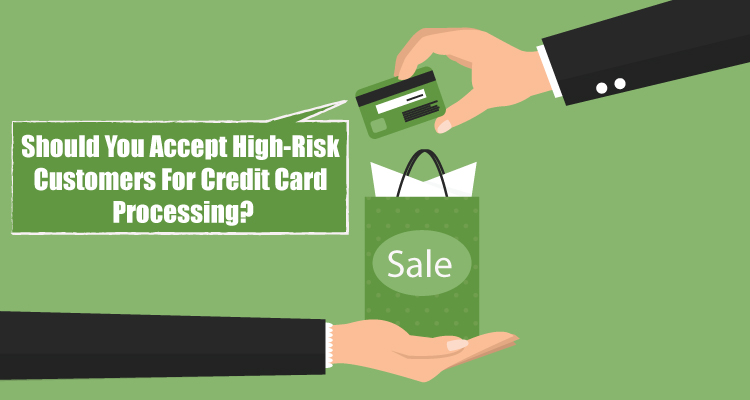As a business owner, especially an owner who is trying to get their business up and running, it’s tempting to accept each and every customer who walks through the door.
It’s easy to understand why. There’s someone who wants to do business with you — they’re your customer. Doesn’t it make sense to work with them instead of spending the time and money acquiring new customers?
The thing is, your clients and customers are the lifeblood of your business. That’s why it’s important to a have several anchor clients so that your income is diversified – just read what happened when Avon ended its relationship with Pallotta TeamWorks — spoiler — it didn’t end well. And, as equally important, you most frequently assess the risks involved with working with specific clients — especially when you extend credit to them.
Table of Contents
ToggleThe Pros and Cons of Accepting/Extending Credit to Your Customers
Before we get any further, let’s first go over the pros and cons of accepting/extending credit to your customers.
The Pros
- You gain new and loyal customers since it provides them with an additional payment option to use at your business and encourages them to become repeat customers.
- It establishes trust since businesses that offer credit are seen as more reliable and stable.
- It improves your reputation because it shows customers, and your competitors, that you’re financially healthy — healthy enough to offer a line of credit.
- It encourages customers to spend more at your business.
- It gives you a competitive edge.
The Cons
- Customers may miss or make late payments, which in turn harms your cash flow.
- You don’t have quick access to cash. This could slow your cash flow or become a problem when you’re in a pinch.
- You’re going to have be more diligent about your record-keeping by making accounts receivable a top priority.
- You may have to pay collection or legal fees to collect the money that you’re owed.
Also, keep in mind, as the U.S. Small Business Administration points out, you should become aware of consumer credit laws, and determine whether or not extending credit works for your business.
For example, extending credit through invoices is normal in industries like construction or manufacturing, but may not be practical for eCommerce merchants. The SBA also reminds us that, “When you extend credit to customers through card payments, the credit card company manages the risk. When you extend credit through invoices or personal checks, you are responsible for verifying and accepting payments and managing the risks that come with them.”

How to Protect Your Business
If you’ve decided that you’re going to accept or extend credit to your customers, keep the following points in mind:
- Make sure that you can afford to accept/extend credit. The easiest way to do this is examining your cash flow and determine whether or not it can cover all of your expenses until your customers make a payment.
- Learn your industry’s standard credit practices, such as the most common payment methods and payment terms like a down payment.
- Create a simple credit policy. As Entrepreneur states, “The simplest customer credit policy has two basic points:
- 1) limiting credit risk and
- 2) diligently investigating each company’s credit-worthiness.”
- Examine their risk level by having them complete an application. Here’s one from Rocket Lawyer to get you started. At the very least, require their name, address, and social security number. If dealing with a business also ask for the type of business, industry, and bank and trade references.
- Make note of warning signs like partial payments, asking for schedule changes, or not being able to reach the customer.
- Reduce future risks by revising credit histories, keeping customer’s credit histories current, making your policy is clearly known, and denying customers if they’re too risky.

Handling a Potential Client or Customer With Bad Credit
After doing your due diligence, you may have spotted some warning signs. However, that doesn’t mean that you have to necessarily reject the customer or business.
Here’s how you can can minimize risk while still working with someone who seems a bit questionable, via The New York Times:
- Dig deeper. There are several factors that can influence an individual’s credit. For example, if they own a seasonal business then that impacts their cash flow, but it doesn’t mean that they’re a deadbeat client.
- Check references. Speak with other credit references before making a final decision. The customer may be unfairly labeled as a high-risk candidate.
- Outline payment terms. Include everything from payment methods, grace periods, discounts for early payment, penalties for late payments, and the process your business uses to follow up on late bills on invoices so that they can’t claim ignorance.
- Ask for advance payment. If they seem too high-risk, it’s acceptable to ask for for full or partial prepayment.
- Consider personal credit histories. Review how the customer handles their other bills.
- Ask about upcoming receivables. Ask for proof of upcoming revenue, such as a signed contract for an upcoming gig.
- Start the relationship slowly. Limit the amount of business that you do with the customer until they’ve proven that they’re trustworthy by making payments on-time.
Finally, even though a “majority of companies are not high credit risks, there are businesses that you should think twice about before adding to your client roster. If you do your homework and still don’t feel comfortable with a potential customer, politely refuse their business. The collection hassle you avoid by saying “no” up front will save you time and money in the long run.”













